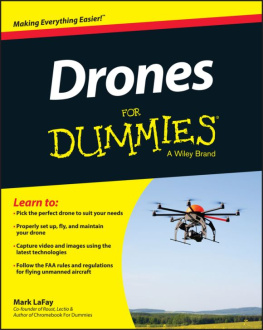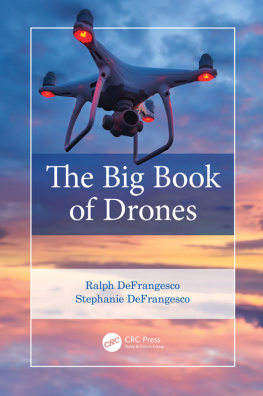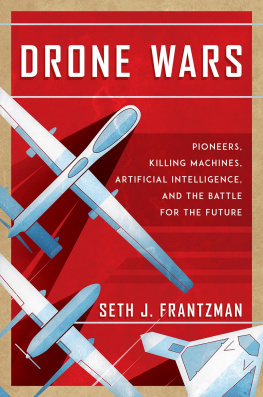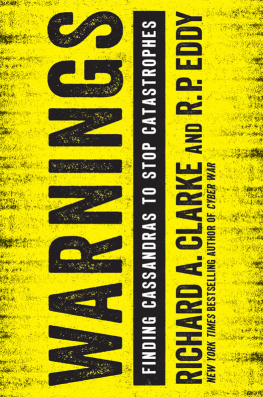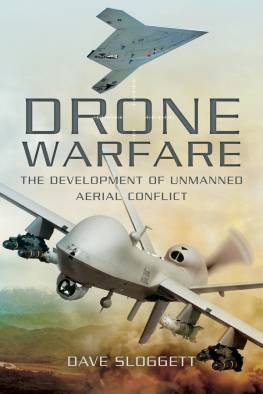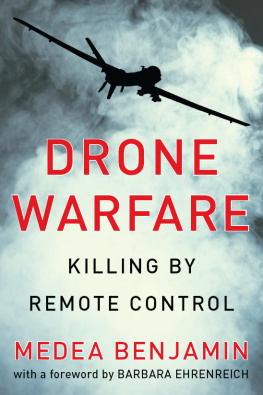Richard A. Clarke
STING OF THE DRONE
Dedicated to Michael W. Lower, who loved thrillers only slightly less than crossword puzzles

SATURDAY, JUNE 27
PAKTIKA PROVINCE
AFGHANISTAN
The man they called Skander had come this way. It was over a hundred generations ago, but the watcher on the hill knew the story. Everyone did. The long column, pounding down the dirt, kicking up the dust, had passed through the canyon below. Then he had built the city in the south and named it after himself. Finally, he and his men had gone, as they all eventually do, as these new ones would.
Now the hardpack road below was rutted, studded with rocks, seldom driven. The lead Pajero SUV sent up a cloud of dry sand, which settled back down on the road before the second vehicle came along. They had learned to keep a distance between their vehicles, but not because of the dust clouds. After two hours on the road, the men noticed that the searing sun covered only half of the narrow path. The high, steep walls in the canyon limited full sun to a few hours a day. The two faded Pajeros maneuvered slowly around a boulder where the road turned north.
Then they saw the goats. The animals on the canyon floor were spread around a few stunted trees and a small green pool fed by a stream falling from the rocks above. Scattering the baying goats, passing the pond, the drivers accelerated as the road straightened out for almost a hundred meters. Then the lead driver hit the horn, three short bursts, although he knew the watchers had announced their approach. The flaps in the netting against the canyon wall parted as the vehicle drove toward the gray camouflage. Under the cover, with the engines off, it was cooler, darker, quiet.
The men in the tent welcomed the new arrivals, kissing them on both cheeks, their bushy beards brushing together. Then they showed the guests to the low table on which the roasted goat lay surrounded by piles of its meat, sliced, spiced, shredded. Bowls held the mezza of lentils and pomegranates. Pitchers held cool water and lemons. Seated on the worn rugs with their rifles behind them, the men began to break off pieces of the flat bread, folding it in their right hands into scoops to pick up the meat. Few of the men spoke. Business could not be discussed before the guests accepted the hospitality. It was tradition.
Although the guests were Pakistanis from the big city of Karachi, they were ethnically Pashtuns, as were the Afghan Taliban who now welcomed them. For the Pashtuns, there was no Afghanistan-Pakistan border. The visitors had come, as they often did, to review the reports of poppy production and arrange for shipments. The beautiful red flower grew so easily in Afghanistan and from it came the paste that the men from Pakistan sold throughout the world as heroin. The Afghans and Pakistanis did other business as well. The Pakistani crime cartel, the Qazzanis, helped their Afghan cousins fight the latest invaders and their Afghan stooges, helped in all sorts of ways. The Qazzanis had many friends in Rawalpindi, home of the Pakistan Army, and in Islamabad, where the intelligence agencies had their headquarters.
Mohsin Qazzani finished his meal. As deputy to his older brother, Mohsin was the heir apparent to the vast Qazzani crime empire, but he liked getting out of the city, seeing the operations. He felt safe here, off the road, hidden beneath the new camouflage. It was sad that the Afghans had to live like this, but it was better than being in the open where the killing birds could see you. There were so many of the birds now, and they had killed so many, on both sides of the border. His hosts now brought boys with bowls of water to wash the feet of the guests. They lit aromatic wood in small braziers to honor the guests. More tradition. Business would have to wait a bit longer.
FRIDAY, JUNE 26
GLOBAL COORDINATION CENTER
CREECH AIR FORCE BASE, NEVADA
The room five thousand miles to the east was also cool, dark, quiet. Lit by the glow of the screen in front of him, the red-haired Air Force pilot suddenly sat straight up in his specially designed ergonomic chair. He was one of thirty Air Force pilots in the room, each remotely flying a drone somewhere in the world. Each wore an olive-drab one-piece flight suit emblazoned with colorful unit patches and symbols.
In front of him were two large and six small screens, ten analog dials, and two sticks. The two large screens provided the live image feeds from two of the cameras onboard his drone, one a high-definition televisionlike video, the other an infrared or synthetic aperture radar image for night operations. One stick directed the aircraft, up and down, right and left. Thumb dials on the side of the stick allowed the pilot to precisely control ailerons and wing flaps. The other stick armed weapons, launched them, and guided them to the target. For weapon release a small, red metal cover on the side of the stick had to be lifted and a button physically depressed before the selected missile launched or the chosen bomb dropped. Despite all of the on-screen controls, a hand had to touch metal before the death from above could be unleashed.
Next to the pilot a similar cockpit could be staffed by a noncommissioned officer to assist the pilot when needed on complicated missions, providing a second set of eyes to look at sensors, or perhaps to steer the aircraft while the pilot guided a missile to the target. Today, the second seat was empty. The pilot was on his own.
Got somethin here, boss, the pilot called out.
Colonel Erik Parsons spun around in his chair above and behind the pilots. Parsons was the squadron commander for the drone pilots at Creech Air Force Base, where there were more Unmanned Aerial Vehicle pilots than at any other of the twelve bases from which Americans directed their worldwide fleet of drones. If pilots were supposed to look like the cartoon hero Steve Canyon, tall and blond, Erik Parsons looked more like a wrestling coach, short, stocky, with closely cropped black hair.
Erik got out of his chair and walked purposefully, quickly down the row of pilot cubicles toward the pilot who had called out, Major Bruce Dougherty.
Whatchya got there, Carrot Top?
Goats, boss. I got goats. But I dont have goat herders. Water, but no people.
Bruce, there is water all over the world without people nearby.
Yes, sir, but not in these arid mountains in the summer. Besides, that was just the tell. I made a second pass with the synthetic aperture radar imager turned on and presto two SUVs sitting under a camo tarp about a football field up the road from the water. Three more and a couple of pickups under netting farther up the canyon. Now, with the infrared on you can see a whole complex of shit nestled up against the canyon wall, hiding from view under the netting. Or so they thought.
Erik Parsons leaned over the pilot for a better look at the screen. Throw it up on the Big Board, Bruce. As a series of green blobs flashed onto the main video screen, covering two hundred square feet on the front wall, Parsons picked up a red handset. Sandy, we got any HVIs likely to be up in grid square A-08? I think I got a live one.
In the glass-walled room behind the pilots cubicles, Sandra Vittonelli consulted her own small screen. Maybe. We lost signals from a guy guarding a High Value Individual almost three hours ago in sector A-17. Thats not too far away, he could be in A-08 by now. But thats hardly reason enough to get excited.
Well, Sandy, even without a named target on screen, I am looking at enough suspicious activity here to designate this a signature-based strike. I think we got us a terrorist camp. As Erik Parsons spoke he patted Bruce Doughertys shoulder.





